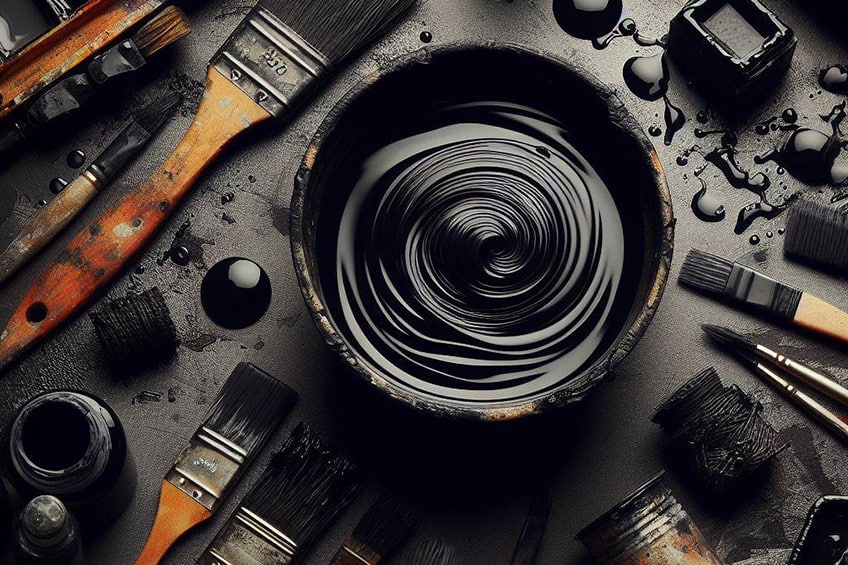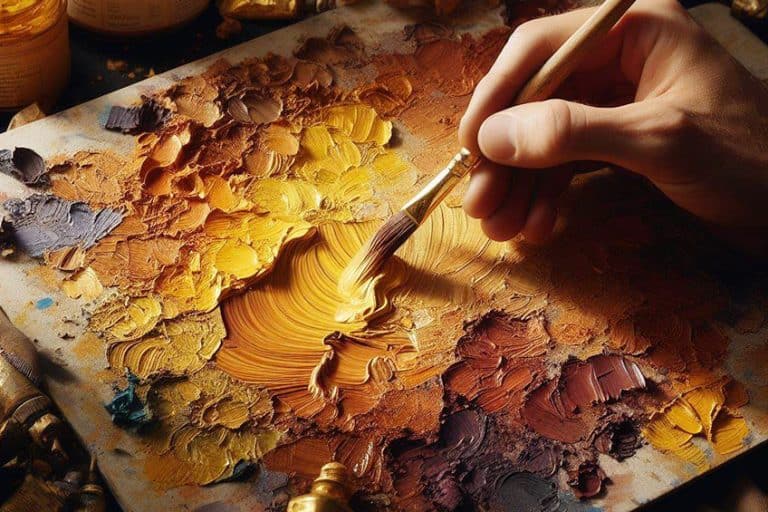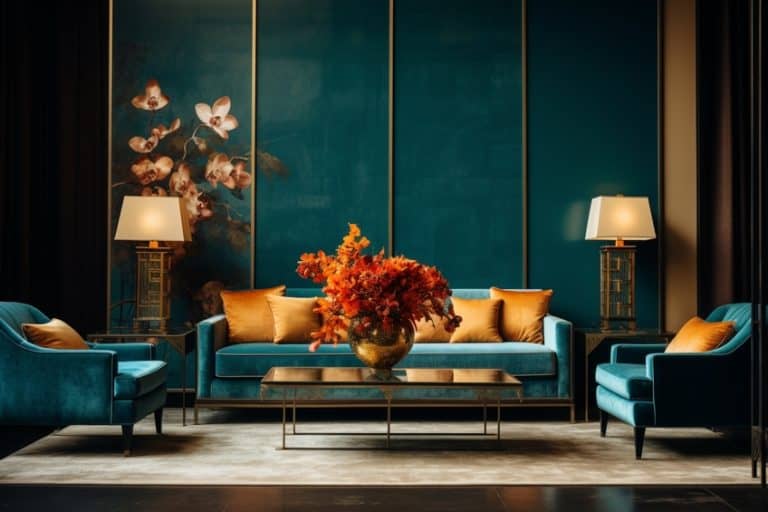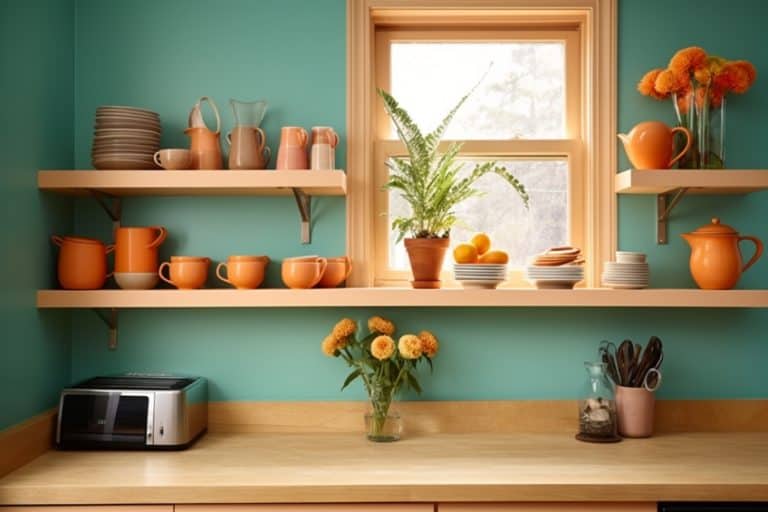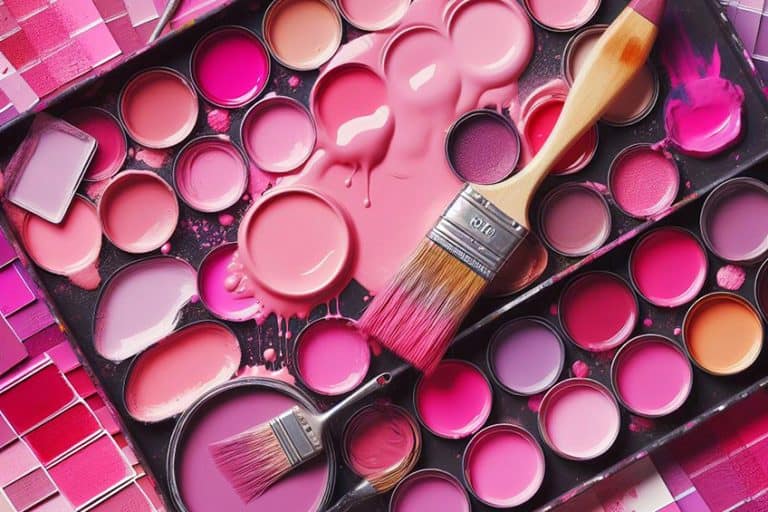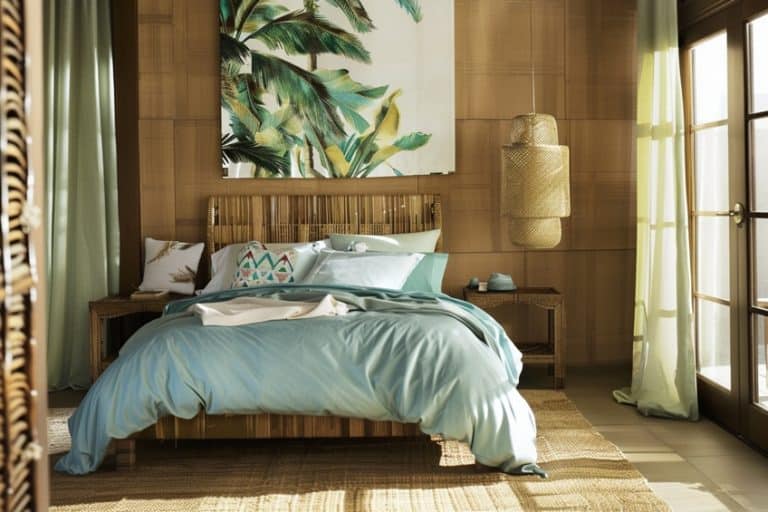What Colors Make Black? – A Guide on How to Make Black Paint
Black is perhaps the most underrated and least-discussed color. In fact, scientifically, black is not a color at all, but an absence of light. When it comes to mixing colors, some will suggest skipping the faff and buying a tube of black paint, but many of the most prominent painters throughout history and today prefer to mix their own black shades. The variation available when you mix your own black paint is astounding, so let us dive right into how to make black paint!
How to Mix Black Paint in a Nutshell
Method 1: Create black paint by combining red, blue, and yellow in equal proportions.
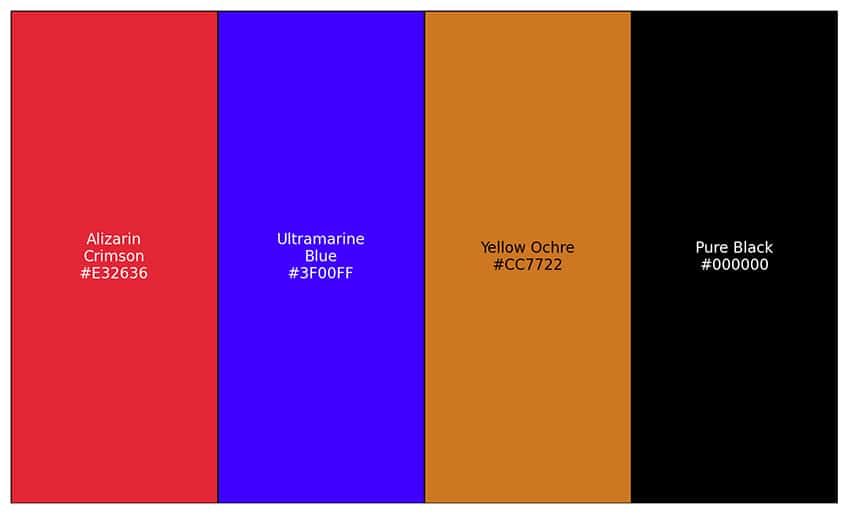
Method 2: Use pairs of complementary colors such as red and green, blue and orange, or purple and yellow to produce black.
Method 3: Combine blue with brown to formulate black; if the result skews too brown, incorporate additional dark blue to achieve the desired black tone.
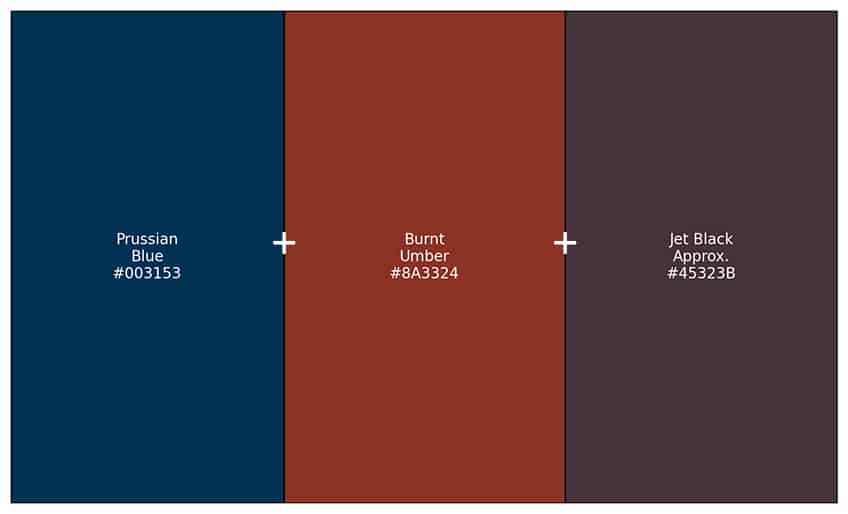
Mixing Recipes for 25 Shades of Black Color
| Shade Name | Mixing Recipe |
|---|---|
| Black Eel | 2 parts Ivory Black, <1 part Payne’s Grey |
| Black Leather Jacket | 2 parts Mars Black, <1 part Forest Green |
| Black Truffle | 2 parts Ivory Black, <1 part Burnt Umber |
| Black Steel | 2 parts Carbon Black, <1 part Prussian Blue |
| Blue Charcoal | 2 parts Lamp Black, <1 part Ultramarine Blue |
| Charleston Green | 2 parts Ivory Black, <1 part Phthalo Green |
| Dark Sienna | 1 part Burnt Sienna, <1 part Mars Black |
| Ebony | 2 parts Mars Black, <1 part Ultramarine Blue |
| Gunmetal | 2 parts Ivory Black, <1 part Metallic Silver |
| Iridium | 2 parts Carbon Black, <1 part Titanium White |
| Oil | 2 parts Ivory Black, <1 part Yellow Ochre |
| Onyx | 2 parts Ivory Black, <1 part Phthalo Green |
| Army Uniform | 2 parts Mars Black, <1 part Olive Drab |
| Basalt Black | 2 parts Lamp Black, <1 part Cobalt Blue |
| Black Cat | 2 parts Carbon Black, <1 part Sapphire Blue |
How to Make Black with the Primary Colors
The primary shade method for creating black involves using the three primary colors: blue, red, and yellow. By mixing equal parts of these hues, you can produce a black shade suitable for various paint mediums such as watercolor, acrylic, and oil. To adjust the resulting black’s hue, you can use lighter shades of the primary colors for a softer black that may appear almost brown.
Modifying the equal parts ratio by adding more blue will result in a cooler black, whereas increasing the red will yield a warmer tone.
How to Make Black with Printing Primaries
Printing primaries, consisting of Hansa Yellow, Phthalo Blue, and Quinacridone Magenta, can be mixed to create a black shade that closely resembles pure black. Hansa Yellow offers a bright, warm tone, while Phthalo Blue provides a cooler hue, and Quinacridone Magenta adds a muted yet somewhat vibrant maroon.
To mix black, start by blending the magenta and blue to form a warm, vibrant purple. Then, gradually add Hansa Yellow, the complement of purple, to neutralize the purple and result in a deep black hue.
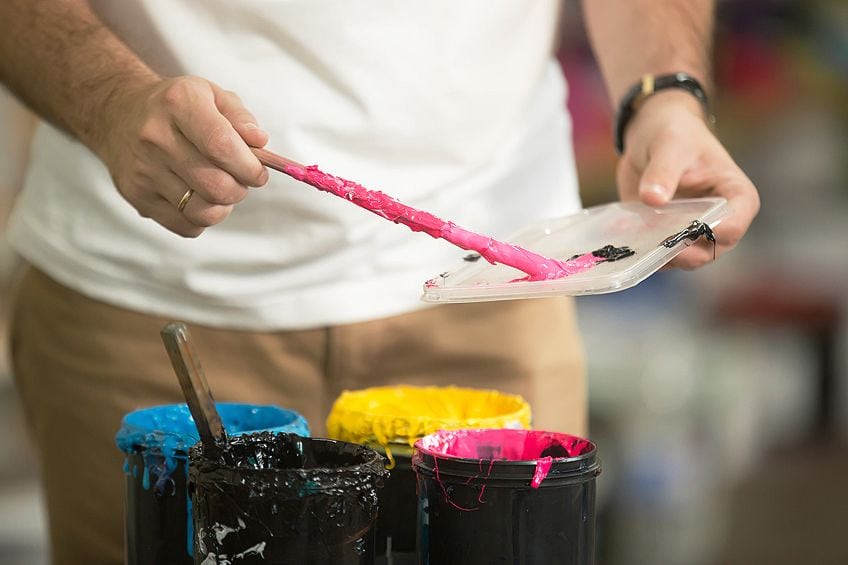
The black shade that you get from this equal parts ratio is one of the closest shades to pure black that you can mix yourself.
How to Make Black with Other Primary Shades
If you are looking for a slightly more brown shade of black, then you can use the following primary shades:
- Yellow Ochre
- Alizarin Crimson
- Ultramarine Blue
In comparison to the printing primaries, these colors are slightly less vibrant. Yellow ochre is a little darker than Hansa yellow and already leans towards brown. Ultramarine blue is a little darker than Phthalo blue and leans a little more towards purple, making it warmer. Alizarin crimson is a lovely deep burgundy shade that also leans a little more towards purple, making it a cool red.
Begin, as with the last method, by combining the red and blue shades to create a purple. This purple is going to be quite dark. You can then add the yellow ochre to the purple mix to cancel it out and create your black paint.
As a result of the slightly more brown-yellow shade, this black has hints of brown, making it perfect for adding shadows and dimension to an object in your painting.
How to Make Black with a Blue Base
While you could happily spend your artistic career making black from the primary colors, there is so much more variety on offer. Blue, one of these primary shades, makes a fantastic base color for making a deep and cool black color. The exact shades of black you can make with this method depend on the exact shade of blue you use, and the other colors you choose to add into the mix.
Here, we are going to outline two different methods for how to make black with a blue base, but we encourage you to take this knowledge and keep experimenting to see how many unique black shades you can make!
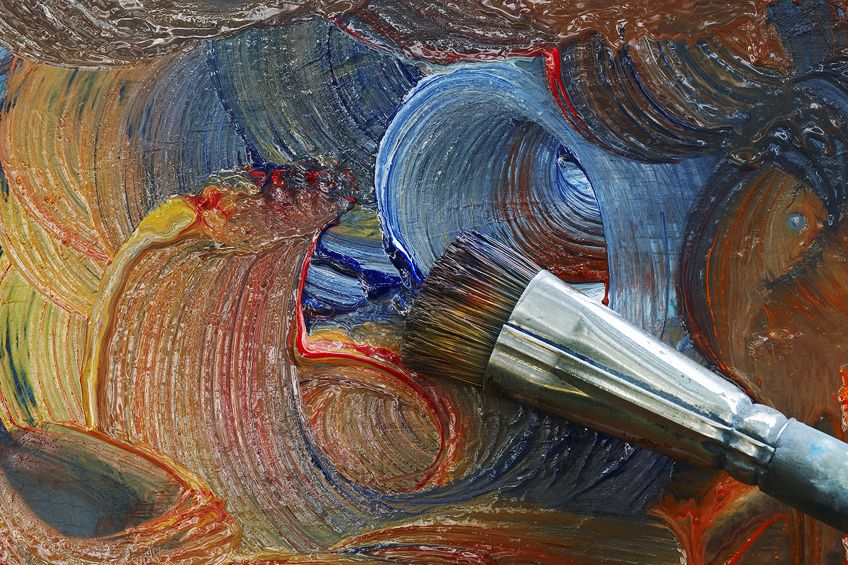
How to Make Black with Phthalo Blue and Cadmium Orange
If you are wanting a light shade of black, that is almost like a dark grey color, then this is the method for you! With these two colors, you can create a light black without using any white.
The magic of this color combination lies in the mutual complementation of these two shades. Because each of these shades is so bright and vibrant, they neutralize each other very well. The vibrant Pthalo blue cancels out the vibrancy of the Cadmium orange, and vice versa. The final shade is a neutral and slightly brown light black color. This black is perfect for those looking to add shadow or those who do not want a very dark shade of black.
How to Make Black with Ultramarine Blue and Burnt Umber
If you want a much darker and cooler black shade, then this is the perfect combination of colors. This black shade would be perfect for a dark night sky or the depths of the ocean. Both of the component colors can be used extensively in color mixing to cool down and darken other colors.
Ideally, you want to use equal parts of each of these shades so that they cancel each other out perfectly, leaving you with a rich black shade. You can, however, experiment with altering the ratio of Burnt Umber and Ultramarine blue to create different shades of black.
Adding more blue will make your black even cooler, while more Umber will have the opposite effect and make your black a little browner.
How to Make Black with a Green Base
Maybe you have noticed that when you use white to lighten a store-bought tube of black paint, the grey can take on a slightly green tinge. The reason behind this process is because many commercial black paints are based on green pigments.
The key to making a beautiful dark black shade with a green base is, to begin with, a dark green. For all of our methods, we are using Phthalo green because it is a rich, cool, and very dark shade of green. We will be combining this green with purple, and two different shades of red to create a variety of black shades.
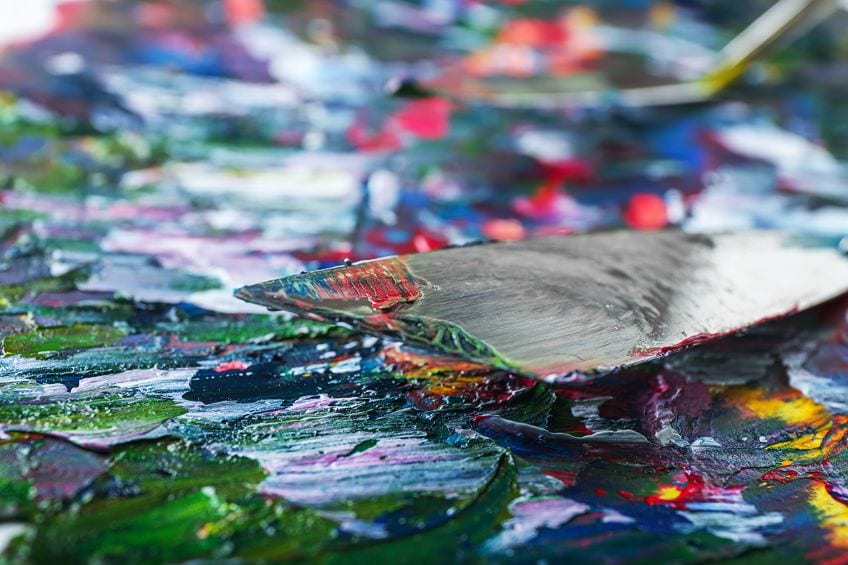
How to Make Black with Alizarin Crimson and Phthalo Green
In the primary color method, we used Alizarin crimson to make black. In essence, this method is the same as the primary color method, except you are condensing the yellow and blue into a single color. Just like blue and orange, red and green are each other’s complementing hues.
The most important part of using this set of colors that make black is the darkness of both the Phthalo green and the Alizarin crimson. Combine equal parts of each color and test your final shade of black on a piece of white paper.
This lovely and vibrant black shade has a hint of brown, but it is almost entirely masked by the darkness.
How to Make Black with Phthalo Green and Quinacridone Red
Again, the choice of red for this method is going to seem familiar because we used it in one of the primary methods. The result of this combination of colors is what we call transparent black because both of the component colors are transparent colors. As a result of this transparency, it is unlikely that you would be able to lighten this black into a neutral grey.
It will take a little patience to get this black mixture perfect, but the result is well worth the effort. This transparent shade of black is a very cool temperature and is also very close to the pure black you can buy in a tube.
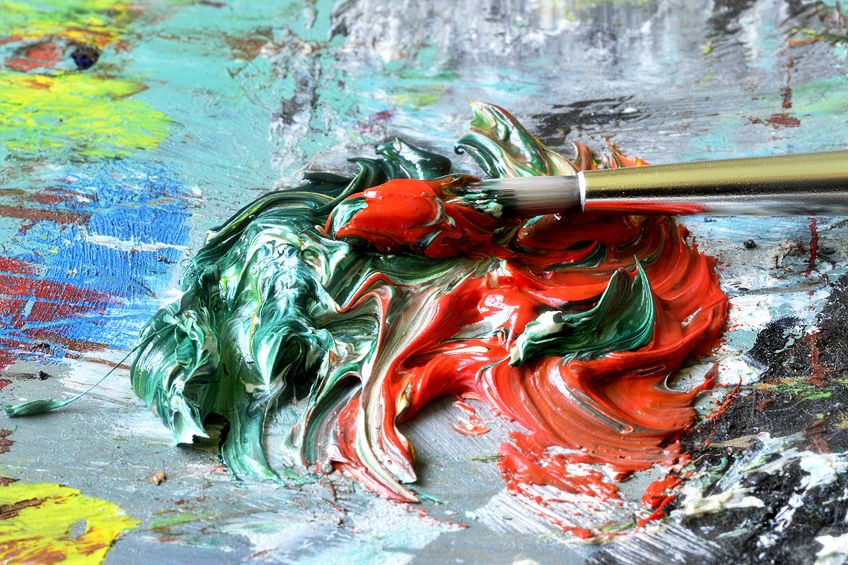
How to Make Black with Dioxazine Purple and Phthalo Green
While the previous two color combinations may have made sense to you because they were fundamentally a combination of all the primary shades, the combination of purple and green may be a little more surprising. The magic of this combination lies in the darkness of the Pthalo green and Dioxazine purple.
Mix equal parts of each of these colors together and then test your black on a piece of paper. Because the green shade is such a forceful color, it may overpower the purple and you may have to add a little more purple to balance it out.
The black shade that you can create from these two colors is a beautiful, rich, and velvety dark color.
Adjusting the Temperature of Your Black
The three overarching methods that we have outlined in this article can be used to create a wide range of different black shades. Some of the black colors we have created are cooler and some are warmer, depending on the component colors. After you have mixed your shade of black, you can adjust the temperature a little more if that is what you desire.
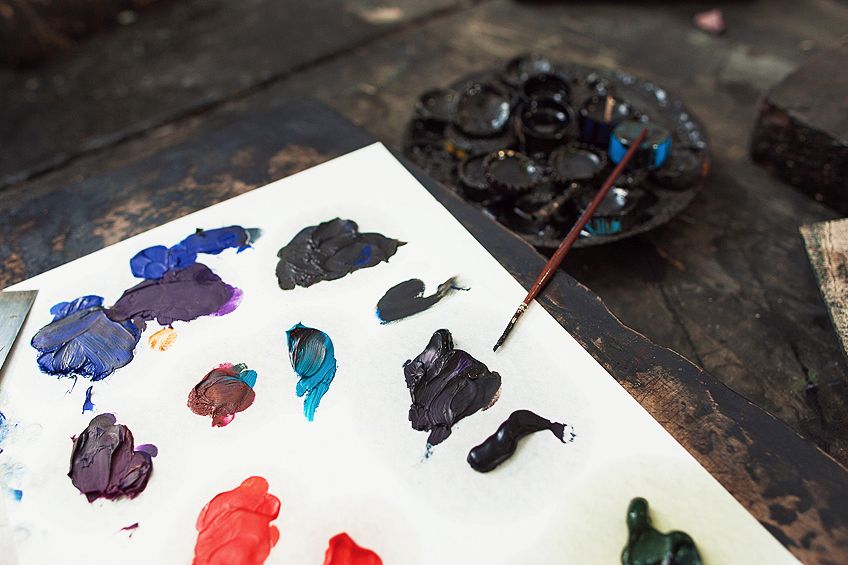
How to Make Black Warmer
There are several colors that you can add to your black shade to make them a little warmer. We strongly caution that you only add a touch of these colors to your black at a time, as they can easily overpower the other component shades and you will no longer have black. Here are some of our favorite shades to use to warm up your black hues:
- Cadmium Orange
- Alizarin Crimson
- Quinacridone Red
How to Make Black Cooler
Just as you can make your black warmer, you can also easily make it cooler by adding a small amount of cooler shades. These are some of the colors that you can use to cool down any black shade:
- Dioxazine Purple
- Ultramarine Blue
- Phthalo Green
- Phthalo Blue
Using Black in Your Work
Black, while not technically a color, plays a crucial role in art and design, serving various functions from backgrounds to adding depth and conveying mood. It is often associated with mystery, sophistication, and mourning. Black’s connection to the supernatural and the unknown makes it ideal for creating an eerie or enigmatic atmosphere in creative works.
The darker and cooler the shade of black, the more it can evoke a sense of mystery, similar to the darkness of a pit or the night sky.
The color is also traditionally linked to mourning and death, evident in cultural practices like widows wearing black and common depictions of death in black attire. Despite these somber associations, black is simultaneously considered a sophisticated color, emblematic of elegance in “black tie events” and fashion with the iconic “little black dress.”
Its slimming visual effect also makes it a favored choice in fashion and interior design, showcasing its versatile and multifaceted nature.
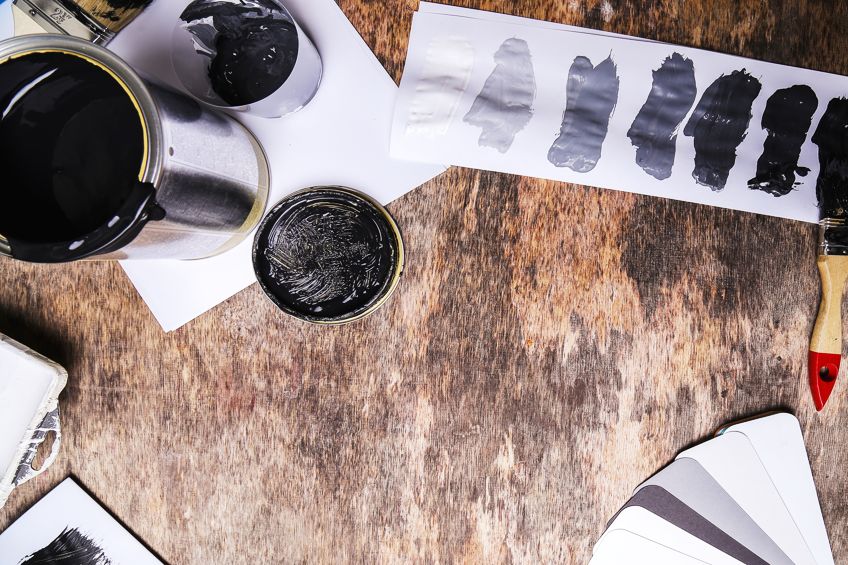
Why You Should Mix Your Own Black
Although most black shades tend to look the same, just like with any other color, there are different black shades and tones that you can create. It is because of this potential for variation that we believe every artist should know how to mix their own black.
Some artists may tell you that mixing your own black is too much hard work and that it is easier to simply buy it in a tube, but we strongly believe that the variability in black shades is a wonderful way to make your work unique and full of life.
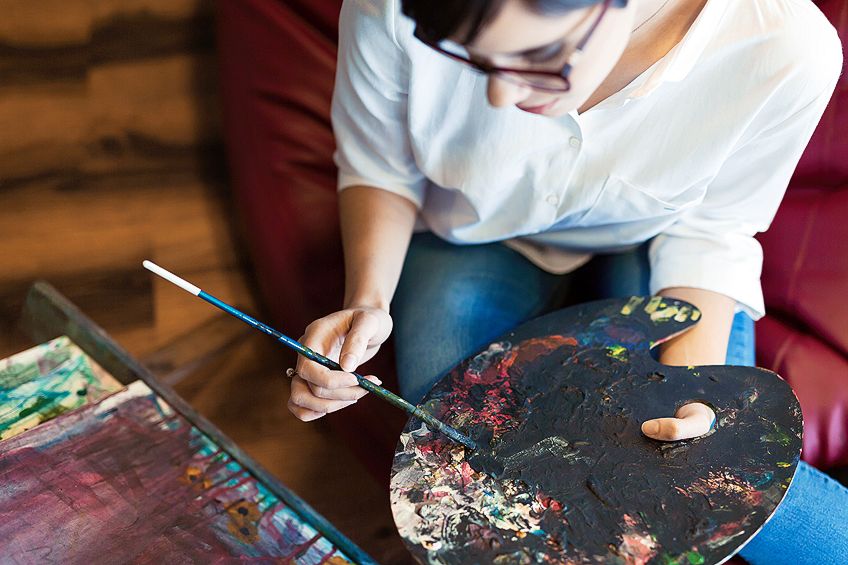
Now, we have to be honest with you here. It is unlikely that you will be able to mix pure black by hand, but this does not mean you will not be able to get close to the perfect shade. The black that you can create with your own hands will always be more vibrant and dynamic. Using your own black shades can help you put the vision in your mind’s eye onto the canvas with more precision and depth. When mixing by hand, you can create blacks that are very light or extremely dark. You can also make your black shade warmer or cooler by adjusting the ratios of your composite colors.
We are excited to share the different methods that you can use to mix your own black shades, so let us dive right in!
Frequently Asked Questions
What Two Colors Make Black?
There are several different ways that you can make black from a range of colors. When it comes to what 2 colors make black, you have the option of using a dark green shade, like Phthalo green, combined with a red shade, like Alizarin crimson. You can also use a combination of a blue color, like Ultramarine blue, and an orange shade, like Cadmium orange.
How to Make Black Paint?
Say goodbye to the one-note tubes of black paint that you can buy at the shop. You can easily make your own black paint at home by combining a range of different colors. You can use a mixture of the primary shades, or use green or blue as a base.
In 2005, Charlene completed her Wellness Diplomas in Therapeutic Aromatherapy and Reflexology from the International School of Reflexology and Meridian Therapy. She worked for a company offering corporate wellness programs for a couple of years, before opening up her own therapy practice. It was in 2015 that a friend, who was a digital marketer, asked her to join her company as a content creator, and this is where she found her excitement for writing.
Since joining the content writing world, she has gained a lot of experience over the years writing on a diverse selection of topics, from beauty, health, wellness, travel, and more. Due to various circumstances, she had to close her therapy practice and is now a full-time freelance writer. Being a creative person, she could not pass up the opportunity to contribute to the Art in Context team, where is was in her element, writing about a variety of art and craft topics. Contributing articles for over three years now, her knowledge in this area has grown, and she has gotten to explore her creativity and improve her research and writing skills.
Charlene Lewis has been working for artincontext.org since the relaunch in 2020. She is an experienced writer and mainly focuses on the topics of color theory, painting and drawing.
Learn more about Charlene Lewis and the Art in Context Team.
Cite this Article
Charlene, Lewis, “What Colors Make Black? – A Guide on How to Make Black Paint.” Art in Context. June 24, 2021. URL: https://artincontext.org/what-colors-make-black/
Lewis, C. (2021, 24 June). What Colors Make Black? – A Guide on How to Make Black Paint. Art in Context. https://artincontext.org/what-colors-make-black/
Lewis, Charlene. “What Colors Make Black? – A Guide on How to Make Black Paint.” Art in Context, June 24, 2021. https://artincontext.org/what-colors-make-black/.


